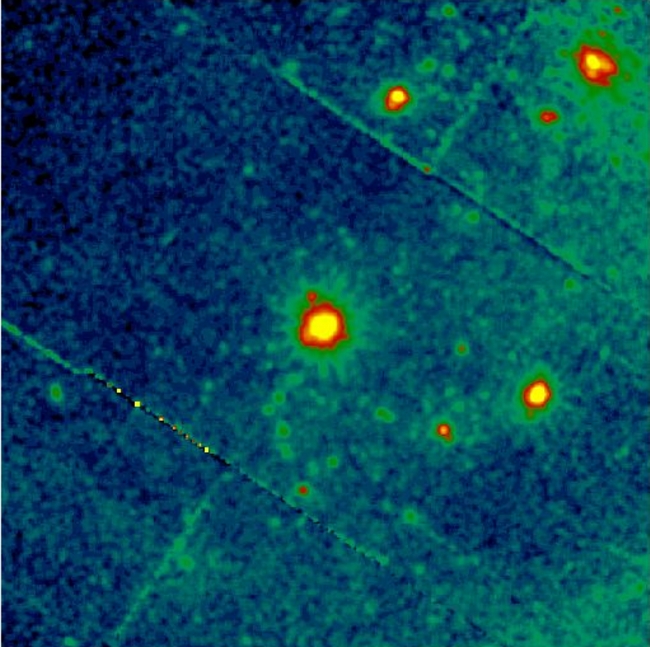
 Credit: A. Brinkman and J. Kaastra/ESA
Credit: A. Brinkman and J. Kaastra/ESA
Hot Hot Stars
The temperatures of normal stars scale with stellar mass; the hotter the star,
the higher the mass. Some of the most massive and hottest stars known are
located in the Milky Way, in a location called as the Carina Nebula about 8000
lightyears from earth. Since massive stars die young, the Carina Nebula is a
place where stars have recently formed, and are forming still. Astronomers want
to understand how and why such massive star clusters form, and one important new
tool available to them is wide-field high resolution X-ray imaging which can be
obtained by the XMM-Newton and Chandra X-ray Observatories. Such X-ray
images can be used to detect infant stars, to identify binary star systems, and
to locate remnants of stellar explosions from the evolution of the most massive
members of the cluster. The image above shows a false-color XMM-Newton image of
the Carina Nebula taken with the
EPIC/MOS1 camera. Bright sources are in yellow, fainter sources in green,
and faint emission in blue. Four very bright sources can be seen. The brightest
source in the image is the supermassive star Eta Carina. To
the right of Eta Car is the X-ray bright star known as WR 25, an evolved star on
its way to becoming a supernova. The bright source in the upper right corner is
produced by the combined emission from a tight cluster of stars known as
Trumpler 14. To the left of Trumpler 14 is the X-ray bright source HD 93250,
another one of the most massive stars in the Galaxy. A mysterious diffuse X-ray
glow, perhaps produced by the strong stellar winds blowing from the massive
stars in the Nebula, is also seen. Note that straight lines in the image are
artifacts of the detector.
Last Week *
HEA Dictionary * Archive
* Search HEAPOW
* Education
Each week the HEASARC
brings you new, exciting and beautiful images from X-ray and Gamma ray
astronomy. Check back each week and be sure to check out the HEAPOW archive!
Last modified July 15, 2002


